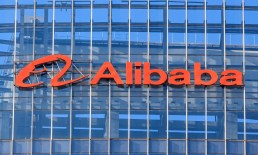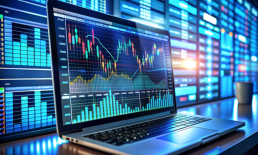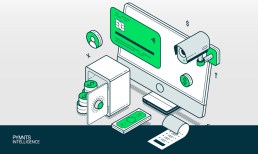As payments move swiftly from the prosaic last step in transactions to become the digital front door of a kinetic connected economy, top executives at leading global firms are acutely aware of connected economy implications, envisioning the next phase of the connected digital shift.
In a conversation with PYMNTS CEO Karen Webster, J.P. Morgan’s Global Head of Innovation and Corporate Development Payments Jeremy Balkin and Neha Wattas, head of strategic insights, innovation and corporate development for J.P. Morgan Payments, described how connected economy use cases are set to remake the consumer experience across virtually all aspects of living, which is consistent with PYMNTS research.
“Payments has historically been viewed as a little bit sleepy within financial services, but we would argue that payments is the sexiest part of financial services in 2021,” Balkin said, pointing to results of roughly $1.5 trillion in FinTech and M&A investments over the last decade.
That activity is creating a whole universe of platforms and online ecosystems — all accessible via smartphone — with Balkin adding that “this [next] decade is very much about connecting platforms to each other. That interoperability, that API connectivity, that 360-degree transfer of both data and value, is very much the world we live in, and that’s what payments are all about.”
Calling payments “the connective tissue” of the connected economy, Wattas expanded on Balkin’s point about the next step: connecting discrete platforms into new ecosystems. “You could extend it to connecting geographies, so countries that were overlooked or entire continents that were offline are now able to participate in this global platform economy because of payments,” she said. “It’s really making it easier.”
See also: The Connected Economy Takes Off
Advertisement: Scroll to Continue
Super Apps — and Trust — Help Bind the Connected Economy
The rise of super apps plays well with the connected economy concept, as Wattas noted that the Apple App Store alone has some two million apps available. An average internet or smartphone user has 80 apps downloaded, but they only use about nine apps each day.
“App fatigue is real,” she said. “Customers are really looking for a one-stop-shop, a single app they can use to run their entire life. That’s super apps, where the sum of the individual services is greater than the whole.”
Wattas called payments central to the budding super-app concept, “because payments fundamentally change the customer acquisition cost and lifetime value. They make it sticky to stay on these super apps and keep using them on a daily basis.”
Outside of Asia, Balkin said, few realize that the super-app ecosystem is already “a $36 trillion set of payment flows in 2020 alone,” with $32 trillion of that coming just from China.
Webster then raised the core topic of trust in a super-app-centric connected economy, which is the Rubicon that consumers must cross to escape the 150 passwords they average today.
“If $5 trillion of physical commerce is moving online, trust would have to be built at scale, because in this new economy you will really want to know if you are interacting with a known entity,” Wattas said. “The fundamental question of ‘is the other party who they say they are?’ [will be] crucial. We think this is going to be an equation of trust and ubiquity.”
On that point, Balkin and Wattas recently co-authored a white paper entitled “Payments Are Eating the World” to outline J.P. Morgan’s new “POWER+” (Power Plus) framework, which is comprised of five “mega themes” identified as Platforms, Online, Wallets, Embedded and Real-Time. Both executives believe that those themes underscore growing connected economy trends.
“Some of these trends are not actually cyclical — I think they’re going to be structural,” Balkin said. In other words, after a consumer’s initial positive super app experience, they’ll get it.
Read the study: How Consumers Live in the Connected Economy
Approaching the Connected Economy Singularity
Citing J.P. Morgan figures that in 2020 alone there were approximately $240 trillion of total payment flows in the world, Balkin said, “we think that … $54 trillion worth of POWER+ value pools is not only the most interesting, but [also represents] the highest growth rates” in the coming decade.
“Every business in this economy is a payments business first, with other value-added services layered on top of them,” he said.
Wattas pointed out that adding payments to any business “reduces your customer acquisition cost — or at the very least, keeps it the same” while also increasing customer lifetime value. “That is a tangible commercial increase in the valuation of companies and platforms. That’s how important it is that every company becomes a payments company, if it isn’t already.”
When every company does payments, trust comes in the form of faith in financial institutions (FIs). On that count, Balkin likened banking to a metaphor for trust, adding that while many people refer to the digital front door through which everything flows, it has in fact become much more complex.
“I would argue that there’s a digital window, a digital backdoor, a digital side door, a digital skylight — because that’s very much the role around the 360-degree nature of data transfer and value exchange, which again is very much what payments is about,” he said.
Calling banks well-placed within the consumer circle of trust, Wattas said customers should still retain identity control, “and provide explicit consent as to when and what type of information is shared and under which context. We’ve been thinking so far about digital identity primarily as KYC or KYB,” she added, when the bigger issue is around portable, self-sovereign identity.
Identity is rapidly taking center stage in the connected economy’s near future, with Balkin predicting up to 41 billion connected devices worldwide by 2025, if not sooner.
“My Fitbit is a payment device, with a wallet,” he said. “My vehicle is no longer a car; it’s a wallet on wheels. Every device could become a payment method or a wearable. In fact, one could argue the point that a person can become their own wallet.”
Both executives agreed that the connected economy and its many digital doorways are bringing about what Wattas termed “the moment when a number of different trends have converged, such that machines will become almost autonomously intelligent. Now apply this to payments. We think that if we’re not already there, we’re on the cusp of it. Data and internet helped create the platform business model, which is now everywhere, and the next decade is all about connecting those platforms.”
Those converging forces include the gig economy, which “was about monetizing commodity skills that you might have and finding jobs through algorithms,” Wattas said. Now it’s the exploding creator economy, which is “monetizing who you are, your passion, your individuality. In this world, a 9-year-old is a small business. There’s this really bespoke set of needs that YouTube and Tik Tok were not built for, and a whole set of vertical players are stepping in.”
“The singularity is here,” she said — and payments need to adapt and keep setting the pace.
Read more: Voice Operating Systems Like Alexa Will Power the Connected Economy: Here’s Why



